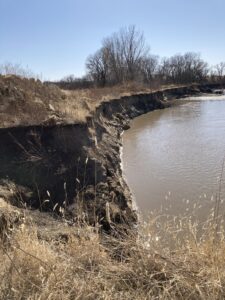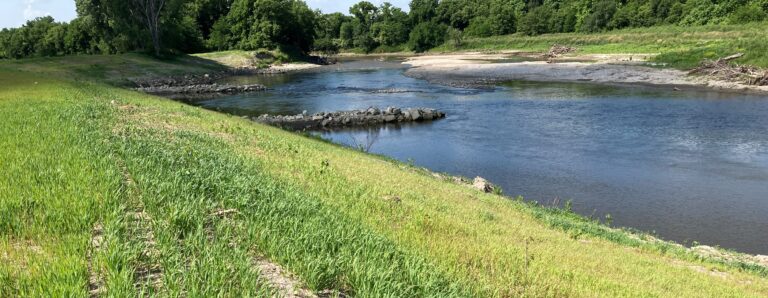Copyright © 2024 National Association of State Conservation Agencies | All Rights Reserved
PO Box 613 • Stevens Point, WI 54481
715-340-0681

When you think of rivers and streams, Kansas may not be the first state that comes to mind. You can find many rivers and streams in the eastern and central parts of Kansas, but unfortunately, they have water quality and erosion/sedimentation issues. Land in Kansas is 98% privately owned, so any efforts at conservation must be effective and attractive to private landowners. The Kansas Department of Agriculture, Division of Conservation (DOC) Riparian and Wetlands Program (RW) provides financial assistance to landowners to implement riparian and wetland conservation projects on private lands to improve water quality, increase quality wildlife habitat, and promote conservation of these natural resources and the benefits they provide.
DOC works with the Kansas Water Office, Kansas Department of Health and Environment, and Kansas Forest Service, collectively known as the “Inter-agency Streambank Team.” The RW program administers the Streambank Protection Program for the state.
In addition to streambank stabilization, DOC works with private landowners to decrease sediment in federal reservoirs caused by streambank erosion. The Streambank Team seeks to target the largest contributing sites first, some losing more than 20,000 tons of sediment a year. Targeting the Delaware, Tuttle and John Redmond Reservoirs, the Streambank Team seeks stabilization by using various flow redirection techniques and installing riparian buffers to help ensure longevity. There is almost no cost to landowners for the projects; they are only responsible for a small permitting fee. “We monitor the sites for several years after installation to help ensure a successful project that protects both agricultural lands and the interest of downstream water users,” said Kristin Kloft, RW program manager.
Streambank stabilization success can be found in Washington and Marshall counties. These large streambank projects utilized rock weirs to redirect the flow away from the previously eroding bank on the Big Blue and Little Blue rivers, both of which flow directly into Tuttle Creek Reservoir which is quickly being filled with sediment. Approximately 46% of the lake’s original storage capacity has been lost due to sedimentation. It is estimated these projects saved an estimated 9,500 tons of sediment from flowing downstream into the reservoir.
DOC works on small streams as well. “We implement small projects on tributaries to improve the streambanks,” said Kloft. Staff from DOC and the Kansas Forest Service create plans to stabilize short sections of small streams. Wading in the creeks is one way to check the stream depth to plan strategies. When steep cut banks threaten a field, home, or bridge, the plan may include placing root wads or rocks as well as seeding and tree planting to secure the streambank. “It’s called a flood plain bench,” Kloft explains. “It expands the area the creek can access without damaging the surrounding areas or undercutting the bank during the high flow events.”
In Washington County, tree root wads were used to build a floodplain bench along the 225 feet of an eroding creekbank on a small stream. The technique resulted in stabilizing the cut bank which helps to protect the nearby agricultural field and riparian planting.
Whether large or small streams, all efforts are reducing sedimentation of reservoirs and improving water quality for everyone.


Copyright © 2024 National Association of State Conservation Agencies | All Rights Reserved
PO Box 613 • Stevens Point, WI 54481
715-340-0681